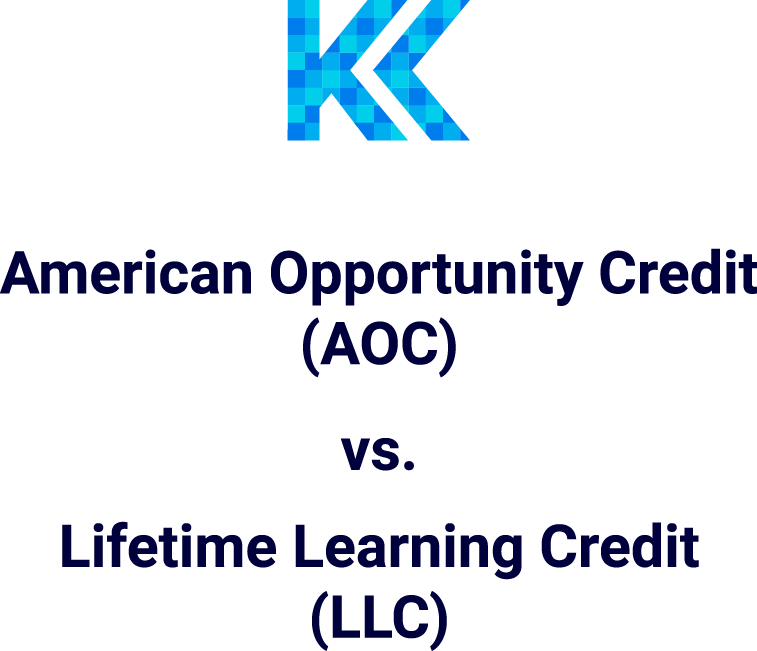If you’re paying for your child’s college education, you may be eligible for college tax credits that can help reduce your tax bill. The American Opportunity Credit (AOC) and Lifetime Learning Credit (LLC) are two key college tax credits that can lower your taxes, but they have their own unique rules and advantages.
Let’s break down who qualifies and how you can take advantage of these credits for your dependent’s college expenses.
What is the American Opportunity Credit (AOC)?
The AOC is a partially refundable tax credit designed to help families with the cost of undergraduate education.
Key Benefits:
- Covers 100% of the first $2,000 of qualified education expenses, plus 25% of the next $2,000, for a total maximum credit of $2,500 per student per year.
- 40% of the credit (up to $1,000) is refundable, meaning you could get money back even if you don’t owe taxes.
- Available for the first four years of a student’s higher education.
Who Qualifies?
- The student must be enrolled at least half-time in a degree or certificate program.
- The parent claiming the student as a dependent (or the student, if not claimed as a dependent) must have a Modified Adjusted Gross Income (MAGI) below:
- $80,000 (single) or $160,000 (married filing jointly) for the full credit.
- The credit phases out completely at $90,000 (single) or $180,000 (married filing jointly).
Who Can Benefit?
Parents paying for their dependent child’s undergraduate education.
Students who are not dependents and pay their own tuition.
What is the Lifetime Learning Credit (LLC)?
The LLC is a non-refundable tax credit that provides a 20% credit on up to $10,000 of qualified education expenses, for a maximum of $2,000 per tax return (not per student).
Key Benefits:
- No limit on the number of years you can claim it. Available for undergraduate, graduate, and even non-degree courses.
Covers tuition, fees, and course materials required for enrollment. - Ideal for working parents, graduate students, or professionals looking to further their education.
Who Qualifies?
- The student must be enrolled in at least one course at an eligible institution.
- The parent claiming the student as a dependent (or the student, if not claimed as a dependent) must have a MAGI below:
- $80,000 (single) or $160,000 (married filing jointly) for the full credit.
- The credit phases out completely at $90,000 (single) or $180,000 (married filing jointly).
Who Can Benefit?
- Parents of college students who have used up their four years of AOC eligibility.
- Graduate students who are paying their own tuition.
- Professionals taking courses for career advancement.
Which College Tax Credit Should You Claim?
| Feature | AOC | LLC |
|---|---|---|
| Max Credit | $2,500 per student | $2,000 per tax return |
| Refundable? | 40% refundable (up to $1,000) | Not refundable |
| Eligibility | First 4 years of undergrad | Unlimited years |
| Enrollment Requirement | At least half-time | One course minimum |
| Income Phase-out | $80K–$90K (single) / $160K–$180K (MFJ) | $80K–$90K (single) / $160K–$180K (MFJ) |
Important: You cannot claim both credits for the same student in the same year.
Final Thoughts
If you’re paying for a dependent’s college education (or your own), taking advantage of the AOC or LLC can provide you with tax savings. The AOC is ideal for parents covering undergraduate tuition, while the LLC works well for graduate students and part-time students.
Not sure which credit you qualify for or how to maximize your education tax benefits? A well-planned tax strategy can make a big difference in reducing your education costs. Kraft Capital can guide you through these decisions and coordinate them with the rest of your financial plan. Please contact me if you have any questions.

– Clint Kraft
Founder and Financial Advisor, Kraft Capital

